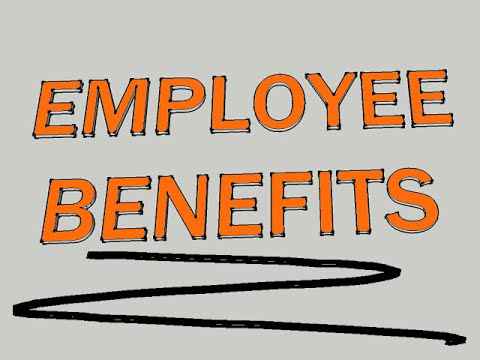If total employee benefits (EIT) are considered to be income, how is it calculated? In a world where benefits packages and cost-cutting measures often result in significant employee expenses, finding a way to calculate the cost of providing these benefits accurately can be tricky. To begin with, let’s look at how if we were to calculate the cost of providing health care coverage as a percentage of a person’s gross salary. This would result in the costs being based on a person’s age and gender. Once we had all the relevant information to make this calculation, it would be easy to calculate how many people would qualify for various benefits packages.

So if we were to calculate the cost of providing health care as a percent of a person’s gross salary, it would certainly be possible to come up with a range of different figures. It could go as high as 100% or as low as zero. The critical point to be aware of is that every case will have a unique circumstance. What one person may consider ‘expensive’ could, in another person’s eyes, be ‘inexpensive.’ So if we were to use one of the methods outlined in this article, it would certainly be possible to arrive at some overall generalities.
If the job expense figure is the sum of all benefits an employee receives during the year, then apply this figure to the job benefits. Let’s assume half of all employees receive a pension and half receive EIT. The pension contribution will amount to about five-eighths of the total job expenses. All other forms of income provided by an employee during his working year amount to about seven thousand dollars. The cost of living allowance would add another 25 percent to this figure. Social security would also add about ten percent. Together with the other income sources mentioned earlier, these figures would give us the ‘average’ worker. By dividing this by the employee’s working hours, we get their ‘full’ salary.
However, if we were to look at the specific case of a person with an excellent record of job performance with perfect attendance, we would find that the gross pay figure works much lower than the average wage earner. People with job records that define excellent performance would not expect to earn such low wages. If we calculate the exact amount of each type of expense (pension, CPP, etc.) instead of the average total job benefits, then we’d find that the difference between what an employee gets paid and what his actual expenses are, is a big one. Then we’d have to make sure there’s enough money left over for the stuff he doesn’t have to buy. Thus the concept of ‘credits’ was born.
How about if you were to look at the employees who don’t qualify for the pension, and their pension is frozen, how would you calculate their total job benefits as a percentage? Is their pension going up or down from their current salary? Is it the same as it is now? There’s no end to this question.
Let’s take the first example of calculating total employee benefits. The employees with the highest pension will always receive the highest percentage. That is, they will receive the most significant total payout. If a company’s workers are getting lower salaries, then the smaller percentage they’d get decreases. In effect, the smaller group of employees would have a lesser share of the larger total. A company’s pension contribution freeze is based on this percentage.
How would the employees who do not qualify for the freeze receive the pension increase? Suppose the employees receiving the freeze receive the most significant percentage based on their salaries. The larger percentage is more significant than the smaller percentage, the larger the group of employees. In that case, these employees will have the opportunity to get an equal increase in their pension. This is the process by which those who are not part of the freeze receive the additional benefit.
Imagine total employee benefits as a percent of their total job benefits. The most considerable portion of an employee’s gross salary goes to their pension. In that case, the proportion of overall benefit increase will go to the person with the most significant gross salary. If a company’s total job benefits go into a mutual fund that collects a variable income. Whether these benefits go into stocks or other investments is up to the company. In that case, the individual who earns the most from investing will also earn the most from the company’s pension plan.
However, suppose a company does not have access to these options. In that case, the person with the enormous total benefit will still receive a proportional increase in their pension. Overall, this puts a lot of resources at risk for the future needs of an organization. The next time an employee is asked the question “What are total employee benefits?” the person should provide an informed answer.
